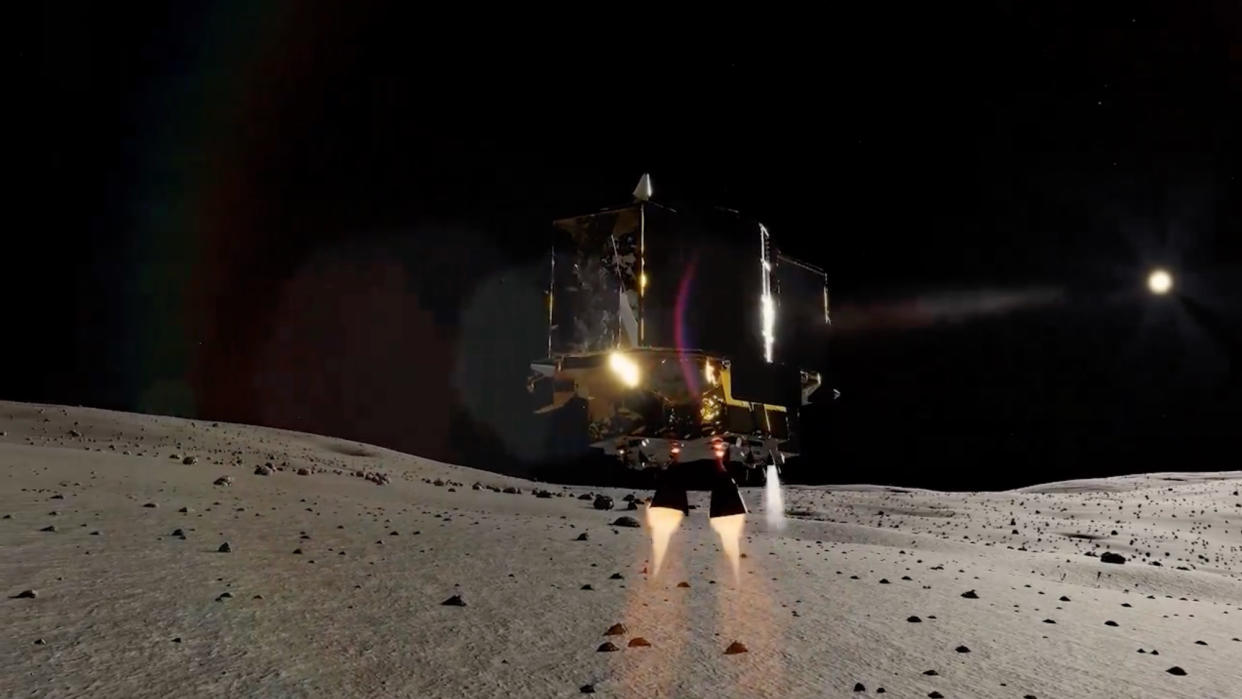Not dead yet: Japan prepares for possible recovery of SLIM moon lander

Japan's first successful moon lander may still have some life left in it.
The pioneering spacecraft, called SLIM ("Smart Lander for Investigating Moon"), touched down on the lunar surface on Friday (Jan. 19), making Japan the fifth nation to join the moon-landing club.
But SLIM didn't get up and running as planned. Its solar panels failed to generate electricity on the surface of the moon, leaving the lander's future in serious doubt, officials with the Japan Aerospace Exploration Agency (JAXA) announced shortly after the historic landing.
That was pretty much all we knew about SLIM's status until early Monday morning (Jan. 21), when JAXA gave us another update. And the news was relatively encouraging: The lander has not been declared dead, and its handlers are working toward a possible recovery.
Related: Missions to the moon: Past, present and future
When SLIM's battery power dipped to 12% capacity on the lunar surface, the lander powered down intentionally "to avoid being unable to restart for a recovery operation due to over-discharge," team members explained early Monday via the mission's account on X.
"According to the telemetry data, SLIM's solar cells are facing west. So if sunlight begins to shine on the lunar surface from the west, there is a possibility of generating power, and we are preparing for recovery. #SLIM can operate with power only from the solar cells," the team said in a separate X post on Monday.
SLIM successfully beamed home technical data and imagery collected during Friday's descent and landing, the team added in another Monday X post.
We should learn much more at the end of the week, when SLIM's handlers plan to offer another status update and provide an overview of the data analyses that have been performed to date, team members said.
"Although the attitude after landing did not go as planned, we are glad we could achieve so much and are happy to have landed successfully. We're also excited to analyse the data," the SLIM team said in yet another Monday-morning X post.
Related Stories:
— Japan's SLIM moon lander completes 1st critical phase in Earth orbit
— Private Japanese moon lander crashed after being confused by a crater
— The moon: Everything you need to know about Earth's companion
SLIM is a demonstrator tasked primarily with proving out the technology required for super-precise lunar landings, which explains its "Moon Sniper" nickname. The probe aimed to land within 330 feet (100 meters) of a designated spot on the rim of the moon's Shioli Crater.
The probe launched in September 2023 along with an X-ray space telescope called XRISM, which deployed into low Earth orbit and recently beamed home its first test images.
SLIM reached lunar orbit on Christmas Day and made its historic landing on Friday. JAXA has not yet announced whether the probe hit its landing target; presumably, we'll hear more about that in the coming update.
SLIM also carried two mini-rovers, called LEV-1 ("Lunar Excursion Vehicle" 1) and LEV-2. Both of these little robots deployed as planned, and LEV-1 was known to be operating on the lunar surface, JAXA officials said on Friday shortly after the landing.
The other four nations that have soft-landed a spacecraft on the moon are the Soviet Union and the United States, both of which first did so during the Cold War space race; China, which first hit the gray dirt in 2013; and India, which joined the club in August 2023 with its Chandrayaan-3 mission.

